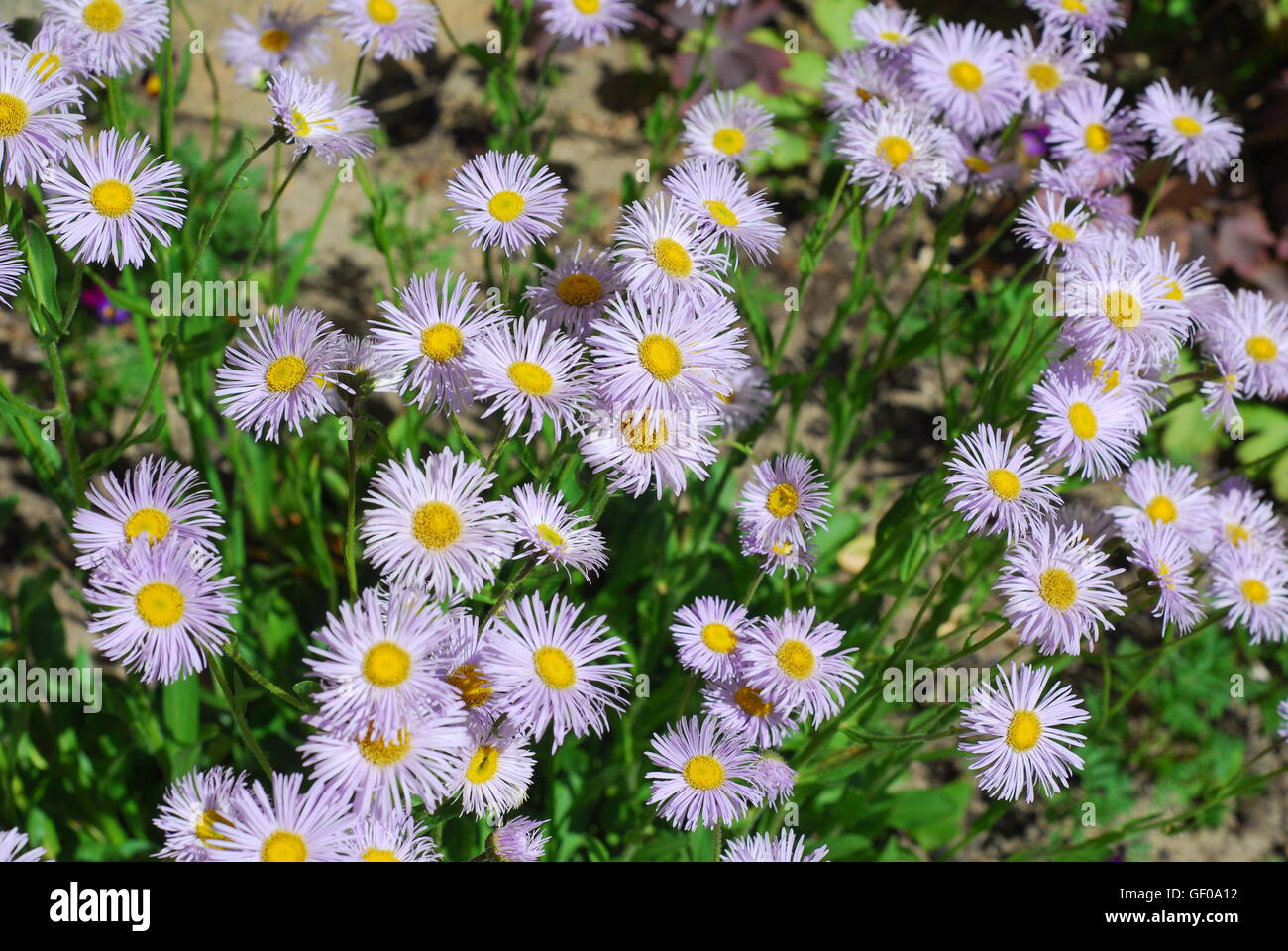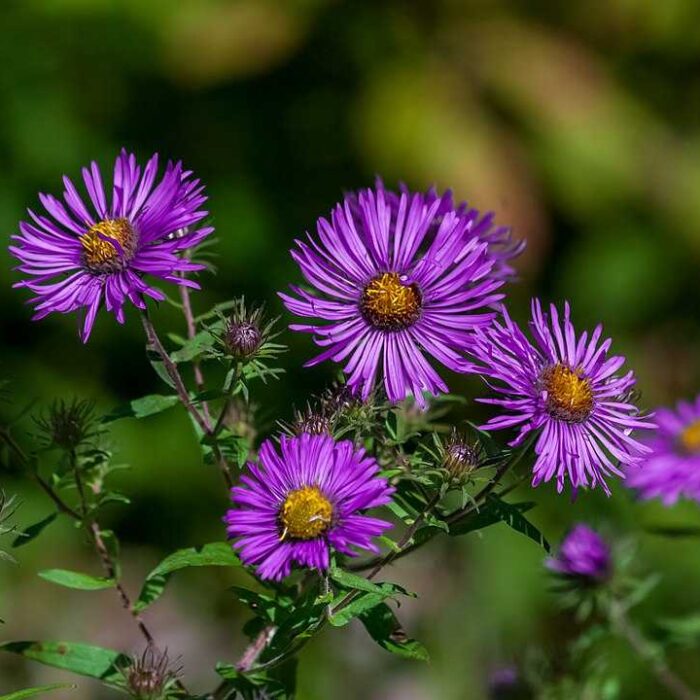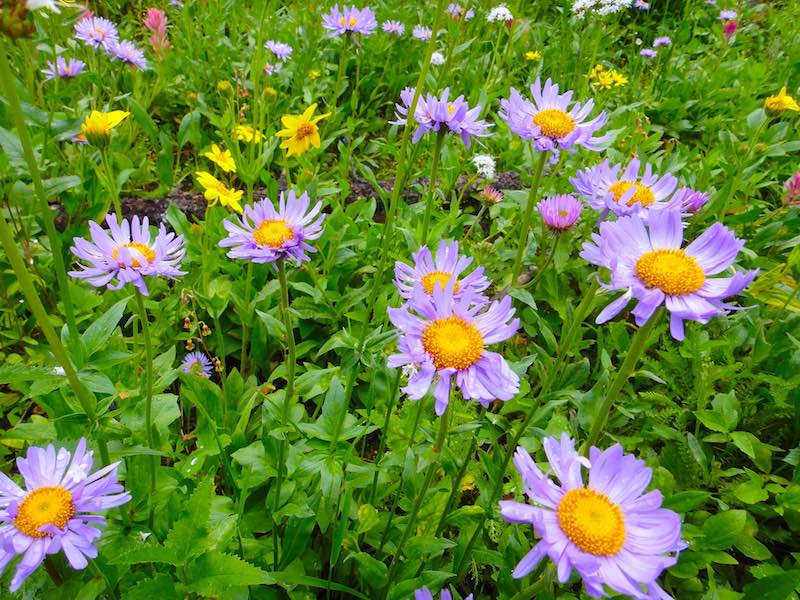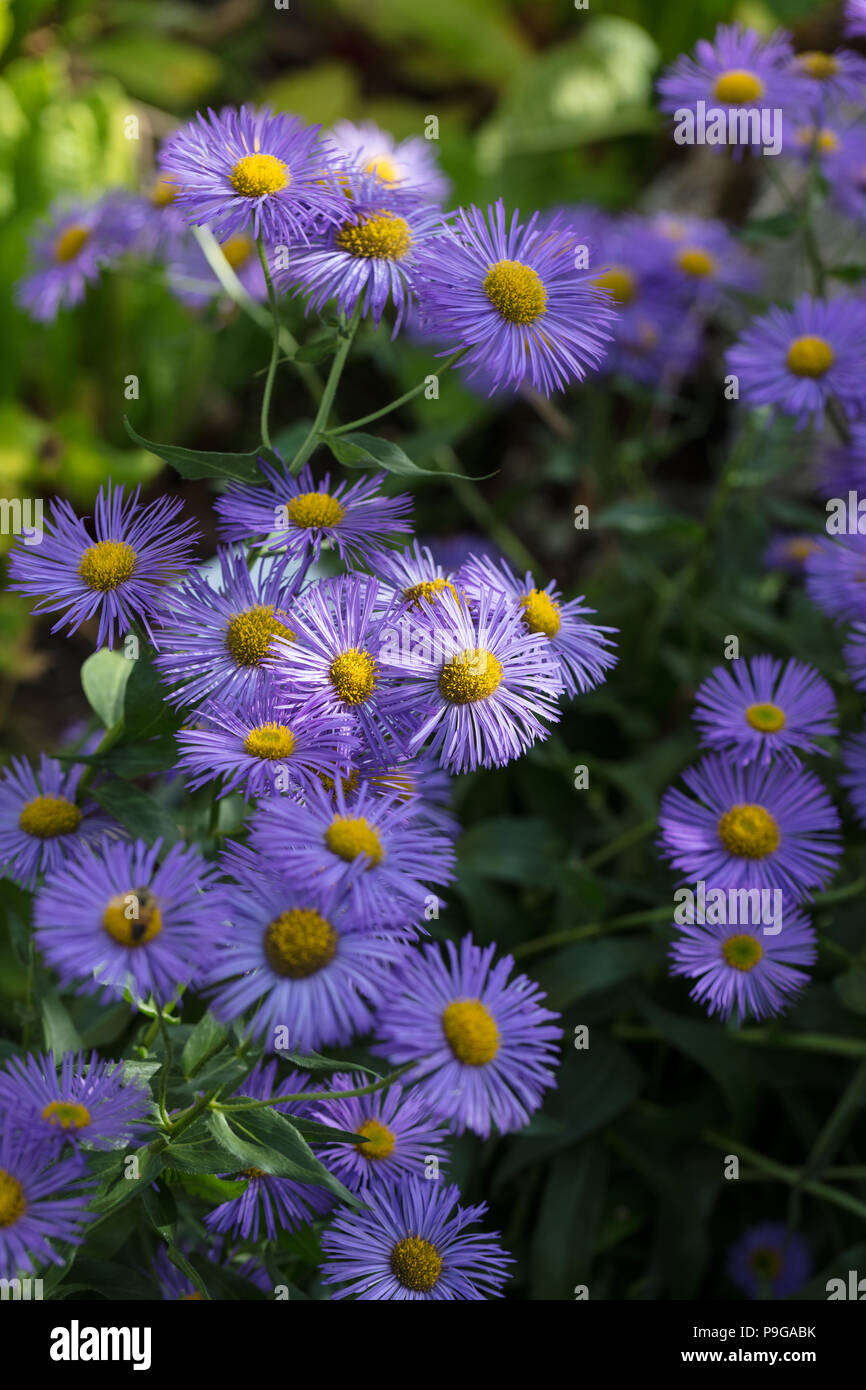
Purple fleabane hires stock photography and images Alamy
4. Buy Plants. Erigeron karvinskianus (Mexican Daisy) is a graceful, trailing, woody-based perennial noted for its endless production of small daisies almost year-round. Opening white, the delicate flowers turn soft pink, fade to purple and attract butterflies and bees. Hugging the ground, this charming groundcover forms a low mound of narrow.

purple fleabane (Erigeron purpuratus)
Description The species may be annuals, biennials, or perennials. They are well-branched with erect stems, characterized by their numerous white, lavender, or pink ray flowers and yellow disc flowers. Some members of this group have no ray flowers. The pappus (=modified calyx, forming a crown) is shorter than in Aster, and consists of bristles.

Purple Fleabane Facts, uses, how to grow and care tips
E. 'Wayne Roderick': A California native and an evergreen perennial, at maturity it is 12 inches tall and forms a 24-inch clump bearing a profusion of lavender-blue flowers. Clay tolerant, perfect for edging, and excellent at attracting native bees and butterflies. This daisy also shrugs off salt spray, wind, and low water.

Prairie Wildflowers Purple Fleabane End of Season
Daisy fleabane thrives under full sun conditions. When germinating, the seed needs soil at least 53 degrees F (11 degrees C). A sunny patch of dirt is best for successful planting and growth. If you want to maximize growth, find a spot with full light on all sides, where the plant can fully come into its own.

Buy Purple fleabane (Sahadevi/Kesavardhini) plant online Vibrant and
Fleabane daisy growing in full sun sites with moist but well-drained soils perform well for a range of applications, with the taller hybrids commonly used as specimen plants or in groupings; shorter hybrids are ideal for adding color to rock gardens. There is some risk of fleabane wildflowers growing leggy in rich soils. Care of Fleabane

Purple Cushion Fleabane — Tapteal Native Plants
Indications Adverse effects Interaction with medicines, supplements Ayurvedic formulations Research Sthanika Karma (Systemic Action) Vernacular names Sahdevi - Names in different languages: Hindi name- Sahadevi, Sahdebi, Sahadebi English name- Purple fleabane, Little ironweed Bengali name- Kukasim Gujarathi name- Sadori Kannada name- Sahadevi

Purple Seaside Fleabane in a Garden Stock Image Image of plant
Woolly fleabane ( Erigeron lanatus) is a member of the sunflower family, Asteraceae, the largest plant family in the world with 23,000 species. In North America, Eurasia, and Africa, there are approximately 200 species, with 62 occurring in North America. The genus Erigeron, commonly known as a fleabane, is a daisy-like flowering herbaceous.

Purple Fleabane Daisy Wildflower, Erigeron annuus, in a Southern
It is also commonly referred to as purple fleabane due to its attractive purple flowers. The plant typically grows up to 1-3 feet tall and features lance-shaped leaves with serrated edges. Its vibrant flowers bloom during the warmer months, making it an excellent addition to gardens and indoor spaces.

purple fleabane (Erigeron purpuratus)
Purple Fleabane is the popular name given to a species of flowering plant native to North America that belongs to the family Asteraceae and is known scientifically as Erigeron Purpuratus. Both Alaska, which is a state in the United States, and Yukon, which is in Canada, are home to this species (part of Canada). Purple Fleabane: Key facts

Purple Fleabane Wild flowers, Plants, Purple
They gradually turn to soft shades of pink and then purple. They're also a favorite with the pollinators, like bees and butterflies. Growing close to the ground, Mexican fleabane is known for forming in mounds that can cascade over edges. This makes it a popular choice for adding to containers, hanging baskets, window boxes, and raised beds.

Purple Blooms on a Fleabane Erigeron Plant Stock Image Image of plant
Sahadevi - The Purple Fleabane Plant - An Introduction. The Sahadevi plant, scientifically known as Vernonia Cineria or Cyanthillium Cinereum, is a medicinal herb found in India. It has been used for centuries in traditional medicine due to its numerous health benefits. It belongs to the Asteraceae family.

Purple Fleabane Perennial garden, Perennials, Purple
The Common and the Daisy Fleabane are the host plants for the Lynx Flower Moth ( Schinia lynx) which can be found in Wisconsin and throughout most of the states east of the Rocky Mountains. They are pollinated by a variety of bees and flies. Wasps, small butterflies and other insects also nectar on these plants.

Purple Buds of Fleabane Plant Stock Image Image of blossoming, blooms
But it is just as happy in a pot as in a crack. Be consistent with watering. Let it dry out in between, but not so long that it flops with thirst or its leaves burnish red and then purple, and it.

purple fleabane (Erigeron purpuratus)
Celebrate summer with lilies, daylilies, purple coneflower, black-eyed Susan, and summer-blooming annuals. Armloads of flowers continue in fall with Japanese anemone, aster, Joe Pye weed, and balloon flower . Fleabane Care Must-Knows Plant fleabane in full sun and average dry-to-medium well-drained soil.

008PurpleFleabane Calgary Guardian
How To ID fleabane. Fleabane is a tricky one to identify and research. First of all the plant in the fleabane genus -Erigeron- are contested, as many countries still use a different scientific name for them: Conyza.The general consensus here in Australia is that the Erigeron genus also incorporates the more specific fleabane genus Conyza.. There are about 30 reported Conyza species in.

Purple fleabane hires stock photography and images Alamy
Vernonia cinerea L., also known as purple fleabane, is a plant with traditional uses in various cultures for its medicinal properties. 1 It has been used to treat respiratory infections, digestive disorders, and skin conditions. Scientific studies have shown that Vernonia cinerea possesses antimicrobial, anti-inflammatory, and antioxidant properties, making it a promising candidate for the.